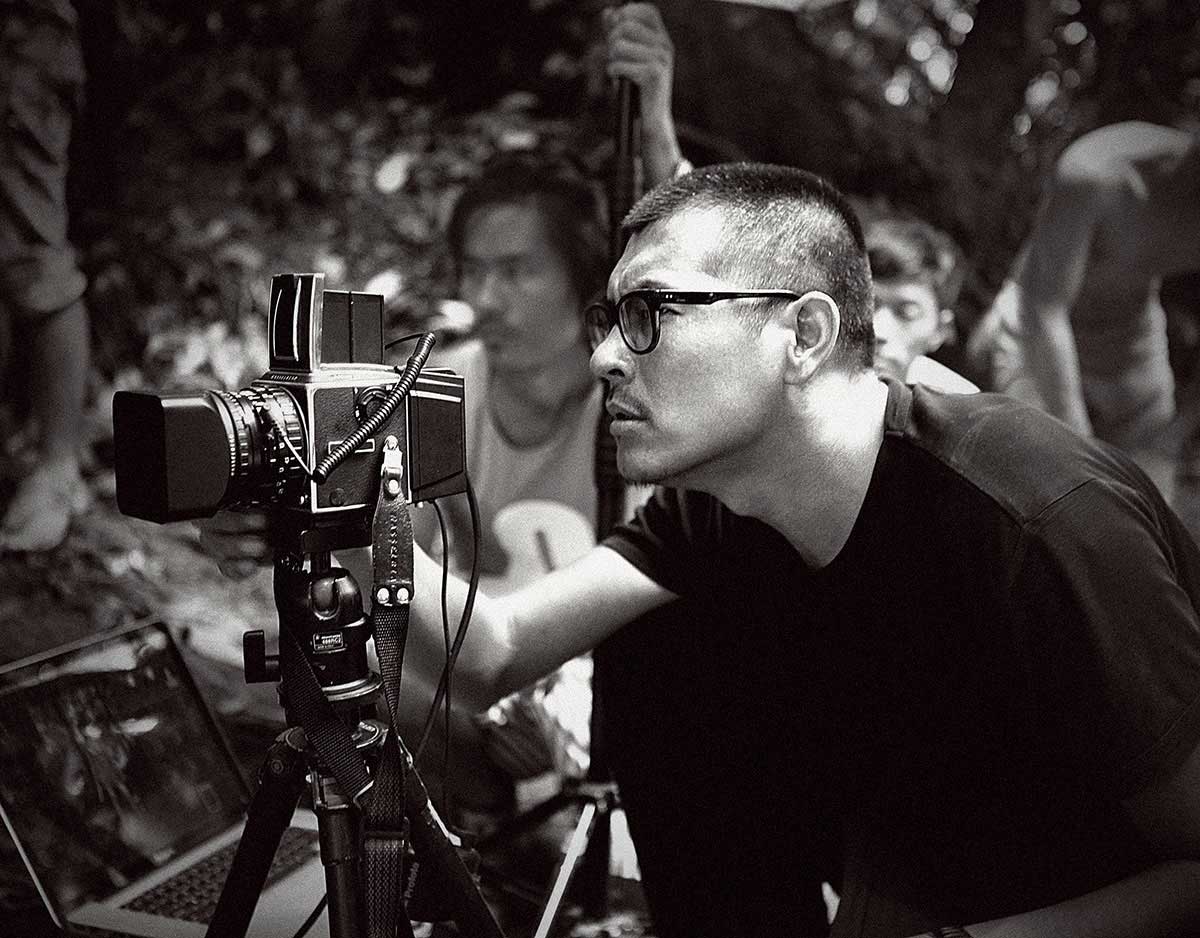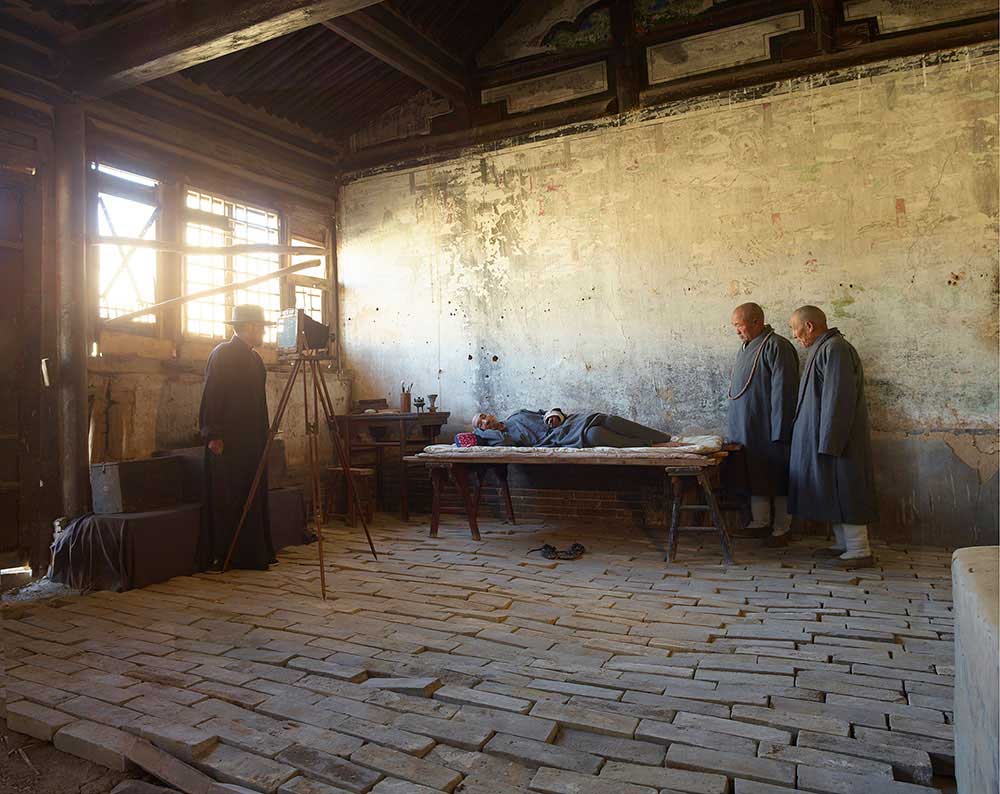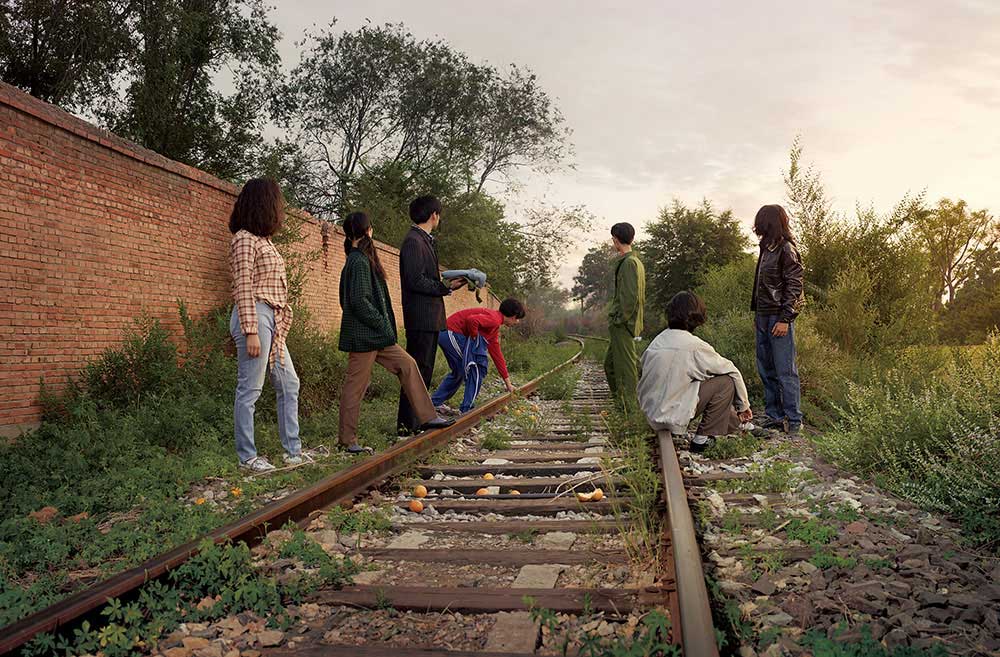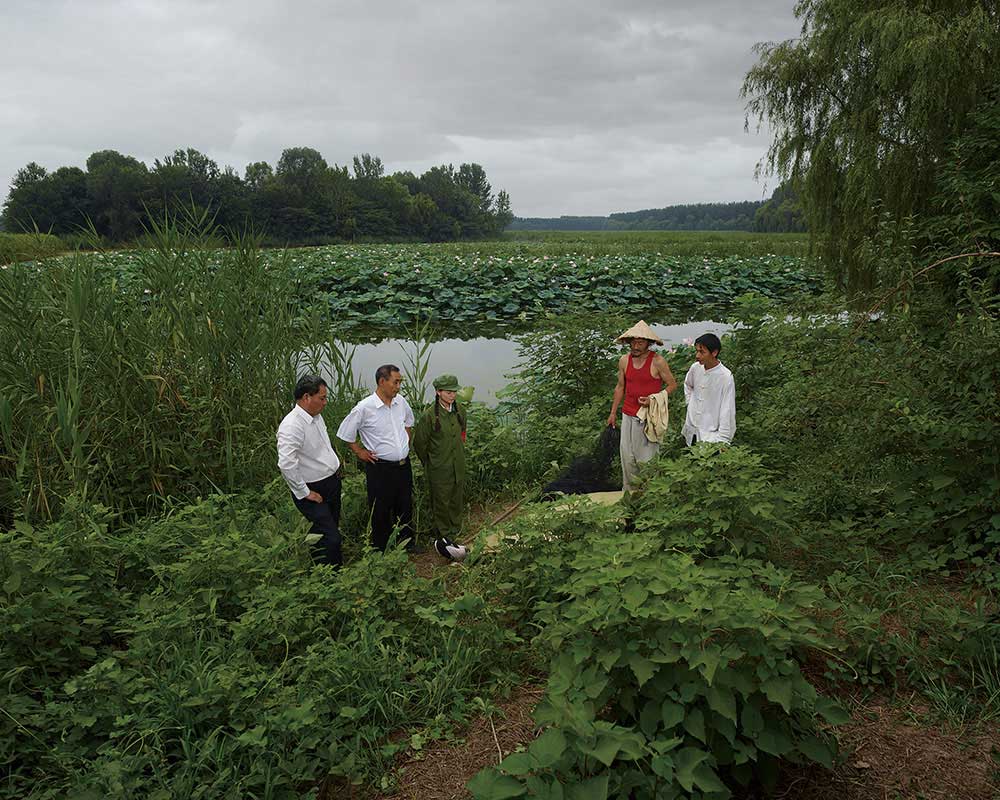 ZHOU YULONG PUBLISHED IN OUR PRINT EDITION 09
ZHOU YULONG PUBLISHED IN OUR PRINT EDITION 09
When I look at these images, I am initially presented with this notion of the interpreted truth. I found it difficult to even differentiate what was real and what was not. And although these images are staged, the relationships between people within various photographs appear as natural as ever. Was it a conscious decision to have a body of work that exemplified the fluidity and beauty of death to some degree?
Yes. I think “death” is one of the most powerful things we know. It’s irresistible and irreversible. Death is the history of time, and in the same way, history is the death of time, the dead body of lost time, the dark part, close to the beauty of truth (where history and death are the closest thing to truth, not the stories in our textbooks). The so-called “beauty” comes from our infatuation with the perceived things and the experience of life. It is the self-deception of the so-called “good things” in the world. Death is the ultimate destroyer of this perception. We feel the beauty of life because of the existence of death, therefore, the so-called ideal, fairy tale, or hope, will become the most beautiful thing in the world. All ideals are unfulfilled wishes and happy games before death.
The departed is obviously a very personal body of work, showcasing the natural passing of life. (In my opinion) as a subtle celebration of a person’s journey represented through obscure composition of various images. Would you say that you attempted to re-create to some extent the emotional relationship you had with your grandfather, when you were stood beside him? Or is this body of work purely about your contemplation of life, death and the unknown?
The loss of my loved ones has affected me a lot. They are the people around me, and this feeling is rather immediate. In fact, everyone is a stranger to the other. Relatives, too. My grandfather wasn’t me. neither were my father and mother. Yet I, by blood, became a continuation of the family history. The death of the other brought me into a sense of universal ritual. As sacred as life is, so sacred is death.
What I also find quite striking when looking at all of these images collectively is the diversity of scenarios and the treatment of death within different societies. Was this an important decision when planning this project, to showcase how different communities treat the passing of a loved one?
Almost each figure in the images has their own backgrounds or archetypes, and they are all people who had important influence at historical moments. Such picture is deliberately arranged, and there are lots of elements of chance. When I was working on this project, I will find that the so-called death of relatives very close to a macro “historical death”. Who made us who we are today? Why should they die the way as we accept it? Is this the truth of death? Or is it the truth of history? Death, history, and everything today that happens with our “intention”, seem to happen in accidents.
Throughout the latter part of your statement you discuss the irreversibility of death.“everything we create will eventually become a history of chaos, where the truth lies hidden, admired or spurned by others”. Do you therefore consider this body of work to be a fetishization of death or more a celebration of someone’s existence in this world?
Existence and death are heaven and hell. They depend on each other, but they don’t seem to belong to each other. The truth is out there laughing. We love the truth so much, just like that we become stupid when we become obsessed with loving someone. Life and death both deserve worship and respect, but not “celebration.” All “celebration” is an escape from sadness, just as there is loneliness and loss behind all pleasure and praise. History is dark. The truth lies in the dark. Everything worth thinking about and pursuing is not the place of light.
I am curious about one particular image in this series. The photograph appears to depict a group of young men and women looking out into the distant forest where a set of train tracks seem to either start or finish. Was this image specifically chosen to represent the ‘life’ or ‘youth’ aspect of human existence, having them symbolically view the falling of light and nature?
Thank you very much for your interpretation of this photo. This photo is based on the Chinese poet Haizi. In the spring of 1989, he committed suicide on the railway. Oranges from his school bag scattered around the railroad. I don’t want to arrange tragic scenes in the picture, and there are no images of dead people in this one, unlike the others. His friends (or enemies) stood in the sunset, looking down the road and holding his clothes. No one knows what the poet thought of at the last moment of his death. Yet this influence on today’s Chinese intellectuals is profound. Perhaps because of the archetype, this photo is romantic throughout the group. As you say, it is “the falling of light and nature”. The dead one walks into his darkness, into his truth, and leaves us to wonder about his legend
I’d like to go back to your statement for this final question, as I was wondering if You could elaborate on this idea of the ‘historical image’ and how this relates to the ‘interpreted truth?’
I can only try to describe my own feelings, and they are not accurate. It seems to me that history — the history we know, including the history that images bring us to call “reality” — must be the product of a filtering process. It seems to me that history – the history we know, including the history that images bring us to call “reality” — must be the product of a filtering process. This is true at any time. Does the truth exist? Yes. Do we know the truth? Never. We may — with luck — be infinitely close to the so-called “truth.” And most of the time, we don’t really want to know the “truth.” We prefer to immerse ourselves in what we consider to be “right” and “comfortable” because such a state is harmless. In our efforts to emphasize our self-worth, we inadvertently become the “majority”, like the sand in the hourglass — in the time that turn over and over, we all fall alone from the small hole, but eventually become a member of the majority, and the cycle goes on forever. From this point of view, we long for the truth, and in fact always do things that deviate from it. [Translated by Vera Xia]
Francesco Scalici
A recent MA graduate from the University of Lincoln, Francesco has now focused on landscape photography as the basis of his photographic platform. An author for DODHO magazine, Francesco’s interest in documentary photography has turned to writing and has had various articles, interviews and book reviews published on platforms such as: ‘All About Photo.com’, ‘Float Magazine’ and ‘Life Framer Magazine’. Currently on a photographic internship, Francesco has most recently been involved in the making of a short film titled: ‘No One Else’, directed by Pedro Sanchez Román and produced my Martin Nuza.











